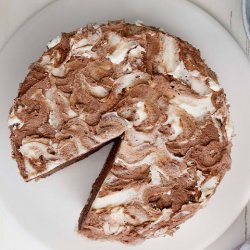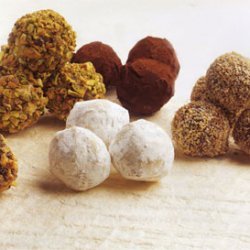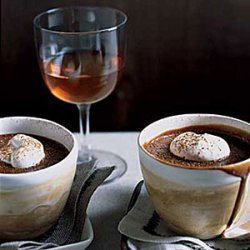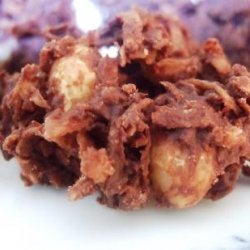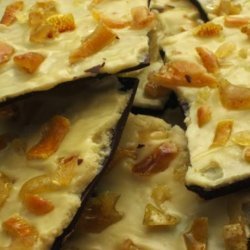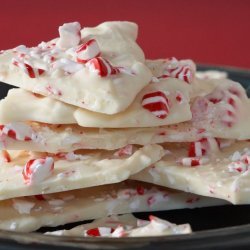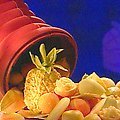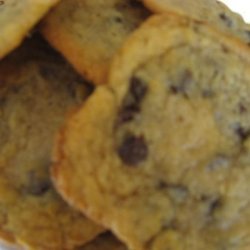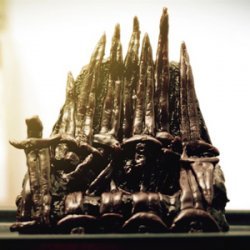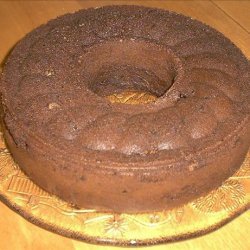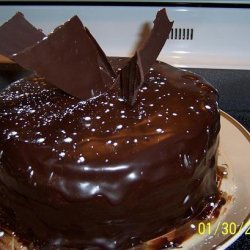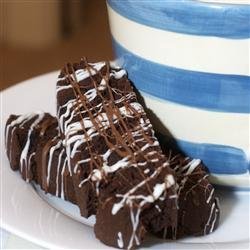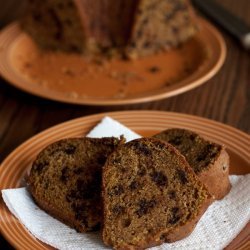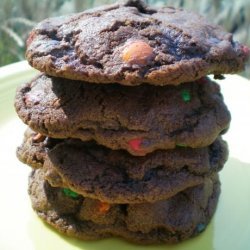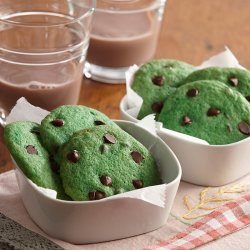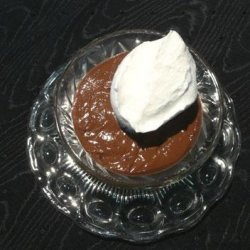Directions:
- For the Base: Using an offset spatula, spread a 1/8-inch layer of milk chocolate on parchment paper, being sure to spread it all the way to the edges. Lift the chocolate-covered paper by its corners and move it to a clean space on your work surface. Let the chocolate harden slightly, 4 to 5 minutes. The chocolate will be firm enough to cut but it will not be hard. Using the tip of a sharp paring knife or an X-acto knife, cut a square. This will be the base of your game board, so determine how large you would like it to be before you begin cutting.
- For the Squares: Place a sheet of acetate or parchment on your work surface with the long side facing you. Using an offset spatula, spread a 1/4-inch layer of bittersweet chocolate onto the acetate and wait until it begins to set. Using a rolling cutter or a hot, sharp chef's knife, cut the sheet of chocolate into squares. The quantity and size of the squares depends upon how large you have cut your base and how many squares you would like to have on your game board. When the chocolate has set, carefully peel away the acetate. It should release from the chocolate quite easily. Repeat this process using the white chocolate.
- For the Frame: Start by drizzling both white and milk chocolate onto parchment paper. Dip your clean, dry fingers into the bowl of bittersweet chocolate and spread it over the drizzles, creating a marbled effect. When you initially drizzle the milk and white chocolate, make sure you are working with enough chocolate so that the result will be at least 1/4-inch thick/high. (Despite the fact that the size of the game board is your creative decision, the thickness must be at least 1/4-inch, as it will break easily if it is any thinner.) Let the chocolate harden slightly, 4 to 5 minutes. The chocolate will be firm enough to cut but it will not be hard. Using the tip of a sharp paring knife or an X-acto knife, cut four pieces. The length should be the same as the four sides of your base and the width should be as determined by you. Using a mitre box if you have one or a knife if not, angle each corner so they fit together when assembling. For the Feet: Place a sheet of parchment on your work surface with the long side facing you. Using an offset spatula, spread a 1/4-inch layer of milk chocolate onto the acetate sheet. Wait until the chocolate begins to set. Using a hot sharp chef's knife, cut 8 squares appropriately sized to your game board. When the chocolate has set, carefully peel away the sheet. It should release from the chocolate quite easily. Use more chocolate to glue two squares together, making a 1/2-inch-thick foot. Repeat with the other squares. Glue them into place on each corner of the base of the game board.
- To assemble, glue down the chocolate squares on top of the footed base, alternating white and dark. Place the frame along the outer edge of the base and glue on with chocolate.
- Ease of preparation: Extremely difficult
- How to Temper Chocolate(From Dessert Circus, Extraordinary Desserts You Can Make At Home by Jacques Torres):
- Chocolate is tempered so that after it has been melted, it retains its gloss and hardens again without becoming chalky and white (that happens when the molecules of fat separate and form on top of the chocolate). There are a variety of ways to temper.
- One of the easiest ways to temper chocolate is to chop it into small pieces and then place it in the microwave for 30 seconds at a time on high power until most of the chocolate is melted. Be very careful not to overheat it. (The temperature of dark chocolate should be between 88 and 90 degrees F, slightly warmer than your bottom lip. It will retain its shape even when mostly melted. White and milk chocolates melt at a temperature approximately 2 degrees F less because of the amount of lactose they contain.) Any remaining lumps will melt in the chocolate's residual heat. Use an immersion blender or whisk to break up the lumps. Usually, chocolate begins to set, or crystallize, along the side of the bowl. As it sets, mix those crystals into the melted chocolate to temper it. A glass bowl retains heat well and keeps the chocolate tempered longer.
- Another way to temper chocolate is called seeding. In this method, add small pieces of unmelted chocolate to melted chocolate. The amount of unmelted chocolate to be added depends on the temperature of the melted chocolate, but is usually 1/4 of the total amount. It is easiest to use an immersion blender for this, or a whisk.
- The classic way to temper chocolate is called tabliering. Two thirds of the melted chocolate is poured onto a marble or another cold work surface. The chocolate is spread out and worked with a spatula until its temperature is approximately 81 degrees F. At this stage, it is thick and begins to set. This tempered chocolate is then added to the remaining non-tempered chocolate and mixed thoroughly until the mass has a completely uniform temperature. If the temperature is still too high, part of the chocolate is worked further on the cold surface until the correct temperature is reached. This is a lot of work, requires a lot of room, and makes a big mess.
- A simple method of checking tempering, is to apply a small quantity of chocolate to a piece of paper or to the point of a knife. If the chocolate has been correctly tempered, it will harden evenly and show a good gloss within a few minutes.
Nutrition Facts
| Amount Per 1 Serving | |||
| Calories | 11548.66 Kcal (48352 kJ) | ||
| Calories from fat | 4980.53 Kcal | ||
| % Daily Value* | |||
| Total Fat | 553.39g | 851% | |
|---|---|---|---|
| Cholesterol | 580.61mg | 194% | |
| Sodium | 2476.66mg | 103% | |
| Potassium | 3910.03mg | 83% | |
| Total Carbs | 1669.25g | 556% | |
| Sugars | 1433.38g | 5734% | |
| Dietary Fiber | 36.29g | 145% | |
| Protein | 136.08g | 272% | |
| Vitamin C | 9.1mg | 15% | |
| Iron | 18.1mg | 101% | |
| Calcium | 3846.5mg | 385% | |
| Amount Per 100 g | |||
| Calories | 318.25 Kcal (1332 kJ) | ||
| Calories from fat | 137.25 Kcal | ||
| % Daily Value* | |||
| Total Fat | 15.25g | 851% | |
|---|---|---|---|
| Cholesterol | 16mg | 194% | |
| Sodium | 68.25mg | 103% | |
| Potassium | 107.75mg | 83% | |
| Total Carbs | 46g | 556% | |
| Sugars | 39.5g | 5734% | |
| Dietary Fiber | 1g | 145% | |
| Protein | 3.75g | 272% | |
| Vitamin C | 0.3mg | 15% | |
| Iron | 0.5mg | 101% | |
| Calcium | 106mg | 385% | |
* Percent Daily Values are based on a 2000 calorie diet. Your daily values may be higher or lower depending on your calorie needs.
Find out how many calories should you eat.
Get Your Recipe of Health!
Follow RecipeOfHealth on Facebook!


